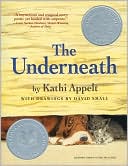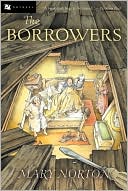I must admit before reading this chapter, there was some muddy waters in my mind on what constituted a non-fiction book. I mean I KNOW and UNDERSTAND that it means real and truthful. My problems is when I forget about text books and National Geographic books (which I do loooove to read) and those books that seem to be the size of my car that look boring and have titles like
How the Western Expansion Came to be... I found it hard to find books that fall into that genre that did not make me want to poke myself in the eye to stay awake to read. So many books of my day (yes, I am getting old enough to say that) were just "dry replicas of information" our text states. Today there are so many wonderfully fun books that talk about real life historic events and are written in such a way that the reader is memorized.
There are two types of non-fiction books, informational books and biographies. Both categories have smaller sub-categories with in them. Biographies and autobiographies are books written about a person. In biographies the story is written by a second party as autobiographies are written by the person them self. Both styles are based in fact and retell events that unfolded during a life span. Informational book, does just as it says, if provides readers with information in a variety of topics; from nature and hobbies to people and finding out how things work. But they do not just list facts, they do extensive research and/or even write from personal experience, but their intent is to pull the reader into understanding and learn through being enthralled by the writer's use of words explaining the information. History stories are one of those books, that if the writer intends to just present information, they lose the reader, but there are a few authors that have the skill of a pen, and their words make the past come alive and the reader is submersed in factual events and taken back in time. One of those great authors was the focus of my author study: Jean Fritz.

She is a historical non-fiction and biography writer. She has written over 65 books. She conducts thorough research of her subjects/events. She remains authentic by only constructing dialog that is present in letters and diaries. She does all of this with such wit and humorous tone, that her books have won several awards over the decades and she is a favorite if many teachers and students.
She has also written an autobiography about her childhood growing up in China until the age of 13.
Homesick: My Own Story was a Newberry Honor book due to Fritz's ability to combine truth and storytelling that conveyed true emotions to the reader and made them feel connected to the events.
The ability of a non-fiction book to do this is the key for the books to be considered great. Our books states that children when given the choice of either reading a well written fiction book and a well written non-fiction book, children prefer non fiction.




